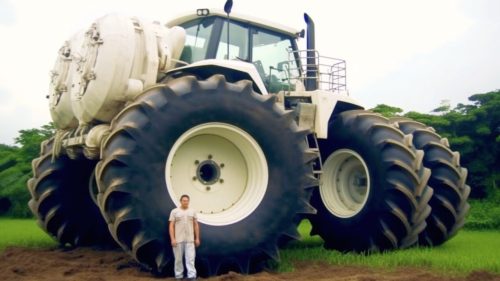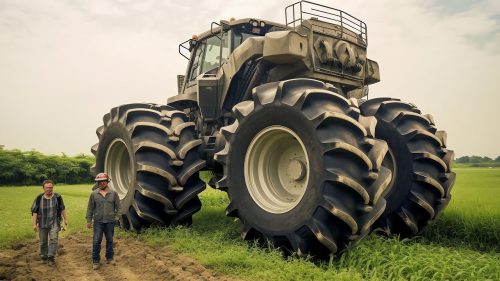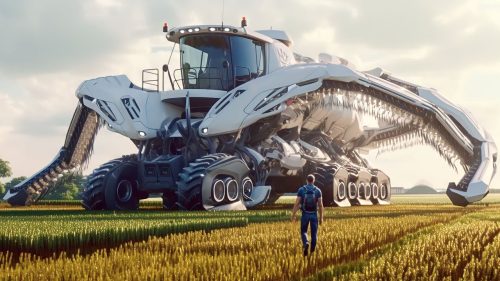Title: “Agriculture’s Technological Revolution: 15 Futuristic Machines Transforming Farming”
In the realm of agriculture, which serves as the foundation of our civilization, we stand at the brink of a technological revolution.

As we relentlessly pursue ways to meet the ever-growing demands of a global population, visionary minds are pushing the boundaries of what can be achieved in farming. Get ready to be captivated as we provide an exclusive glimpse into the world of 15 futuristic agricultural machines poised to transform the industry.
1. Automated Drone Crop Sprayers: Revolutionizing precision agriculture, these advanced drones are equipped with cutting-edge spraying technology. They can precisely target crops with fertilizers and pesticides, minimizing waste and optimizing yields.
2. Robotic Harvesters: Bid farewell to labor-intensive harvesting. Robotic harvesters utilize computer vision and robotic arms to autonomously identify and pick ripe crops, increasing efficiency and reducing reliance on human workers.
3. Vertical Farms: Making the most of limited urban space, vertical farms employ advanced LED lighting, hydroponic systems, and climate control to maximize crop production in stacked layers.

4. Soil Sensors and Data Analytics: Smart soil sensors measure soil moisture, nutrient levels, and temperature, providing real-time data and insights to optimize irrigation and fertilization strategies, ultimately enhancing crop health and yield.
5. Intelligent Irrigation Systems: These systems leverage sensors, weather forecasts, and AI algorithms to precisely regulate water usage, minimizing waste and ensuring crops receive the ideal amount of water for optimal growth.
6. Precision Planting Robots: Autonomous robots navigate fields, planting seeds at precise depths and intervals. They adapt to different soil conditions and optimize planting patterns, resulting in uniform crop emergence and higher yields.
7. AI-Powered Crop Disease Detection: Through the analysis of plant images, AI algorithms can detect early signs of diseases and pests, enabling farmers to take immediate action and prevent widespread crop damage.
8. Self-Driving Tractors: Equipped with GPS technology and sensors, self-driving tractors navigate fields, performing tasks such as plowing, seeding, and harvesting while optimizing fuel efficiency and reducing human error.
9. Hydroponic Systems: This soilless cultivation method involves growing plants in nutrient-rich water solutions, saving water, maximizing space utilization, and providing ideal growing conditions for various crops.

10. Agricultural Robots: From weed-pulling robots to robotic pollinators, these versatile machines can perform a range of tasks, reducing the need for manual labor and enhancing precision in agricultural operations.
11. Advanced Crop Monitoring: Satellite imaging, drones, and remote sensing technologies enable farmers to monitor crop health, growth patterns, and stress levels across large areas, allowing for targeted interventions and improved decision-making.
12. Smart Greenhouses: These high-tech structures integrate climate control systems, automated irrigation, and monitoring technologies to create optimal growing conditions, regardless of external weather conditions.
As we delve into each of these futuristic agricultural innovations, you’ll discover how they are reshaping the landscape of farming, promising greater efficiency, sustainability, and food production for a rapidly changing world. Stay tuned for an exciting journey into the future of agriculture.
